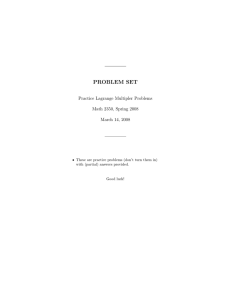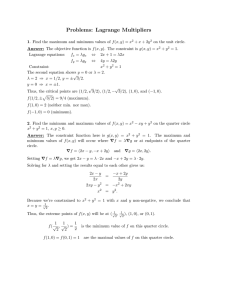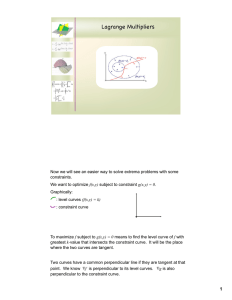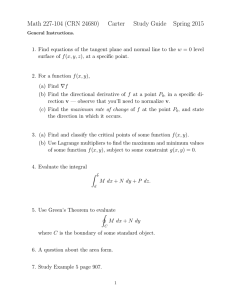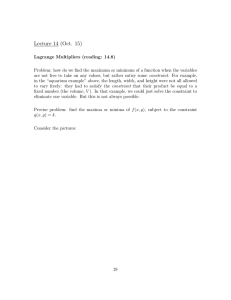Document 13739930
advertisement
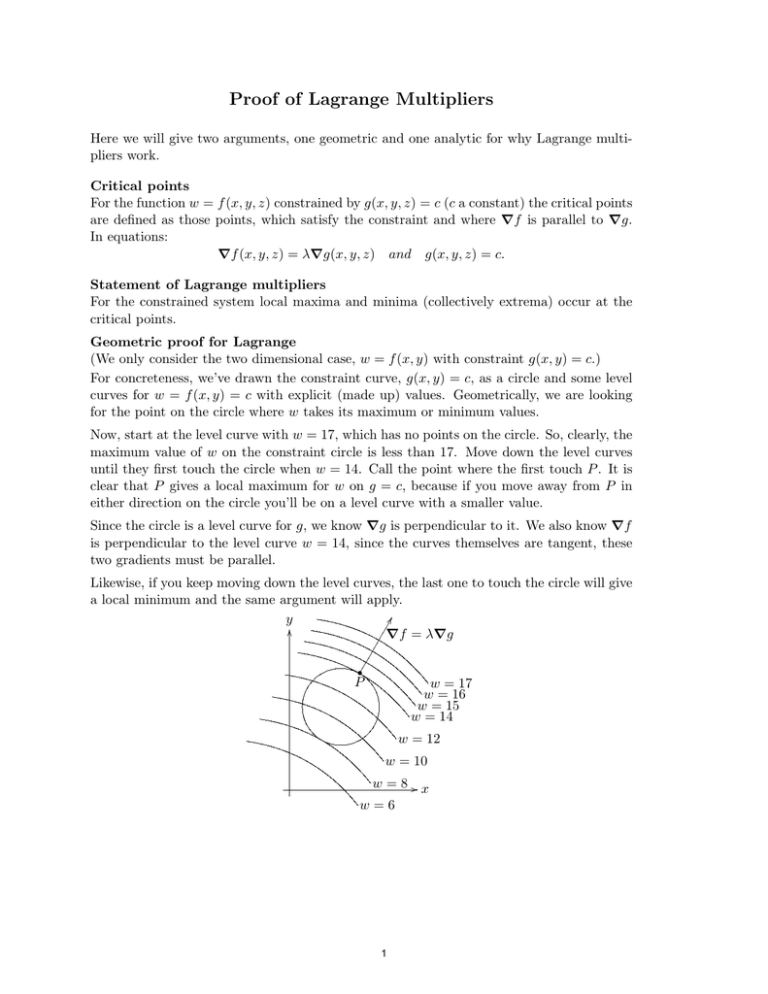
Proof of Lagrange Multipliers Here we will give two arguments, one geometric and one analytic for why Lagrange multi­ pliers work. Critical points For the function w = f (x, y, z) constrained by g(x, y, z) = c (c a constant) the critical points are defined as those points, which satisfy the constraint and where Vf is parallel to Vg. In equations: Vf (x, y, z) = λVg(x, y, z) and g(x, y, z) = c. Statement of Lagrange multipliers For the constrained system local maxima and minima (collectively extrema) occur at the critical points. Geometric proof for Lagrange (We only consider the two dimensional case, w = f (x, y) with constraint g(x, y) = c.) For concreteness, we’ve drawn the constraint curve, g(x, y) = c, as a circle and some level curves for w = f (x, y) = c with explicit (made up) values. Geometrically, we are looking for the point on the circle where w takes its maximum or minimum values. Now, start at the level curve with w = 17, which has no points on the circle. So, clearly, the maximum value of w on the constraint circle is less than 17. Move down the level curves until they first touch the circle when w = 14. Call the point where the first touch P . It is clear that P gives a local maximum for w on g = c, because if you move away from P in either direction on the circle you’ll be on a level curve with a smaller value. Since the circle is a level curve for g, we know Vg is perpendicular to it. We also know Vf is perpendicular to the level curve w = 14, since the curves themselves are tangent, these two gradients must be parallel. Likewise, if you keep moving down the level curves, the last one to touch the circle will give a local minimum and the same argument will apply. yy� Vf = λVg • P w = 17 w = 16 w = 15 w = 14 w = 12 w = 10 w=8 �x w = 6 1 Analytic proof for Lagrange (in three dimensions) Suppose f has a local maximum at P on the constraint surface. Let r(t) = (x(t), y(t), z(t)) be an arbitrary parametrized curve which lies on the constraint surface and has (x(0), y(0), z(0)) = P . Finally, let h(t) = f (x(t), y(t), z(t)). The setup guarantees that h(t) has a maximum at t = 0. Taking a derivative using the chain rule in vector form gives h' (t) = Vf |r(t) · r' (t). Since t = 0 is a local maximum, we have h' (0) = Vf |P · r' (0) = 0. Thus, Vf |P is perpendicular to any curve on the constraint surface through P. This implies Vf |P is perpendicular to the surface. Since Vg|P is also perpendicular to the surface we have proved Vf |P is parallel to Vg|P . QED 2 MIT OpenCourseWare http://ocw.mit.edu 18.02SC Multivariable Calculus Fall 2010 For information about citing these materials or our Terms of Use, visit: http://ocw.mit.edu/terms.
